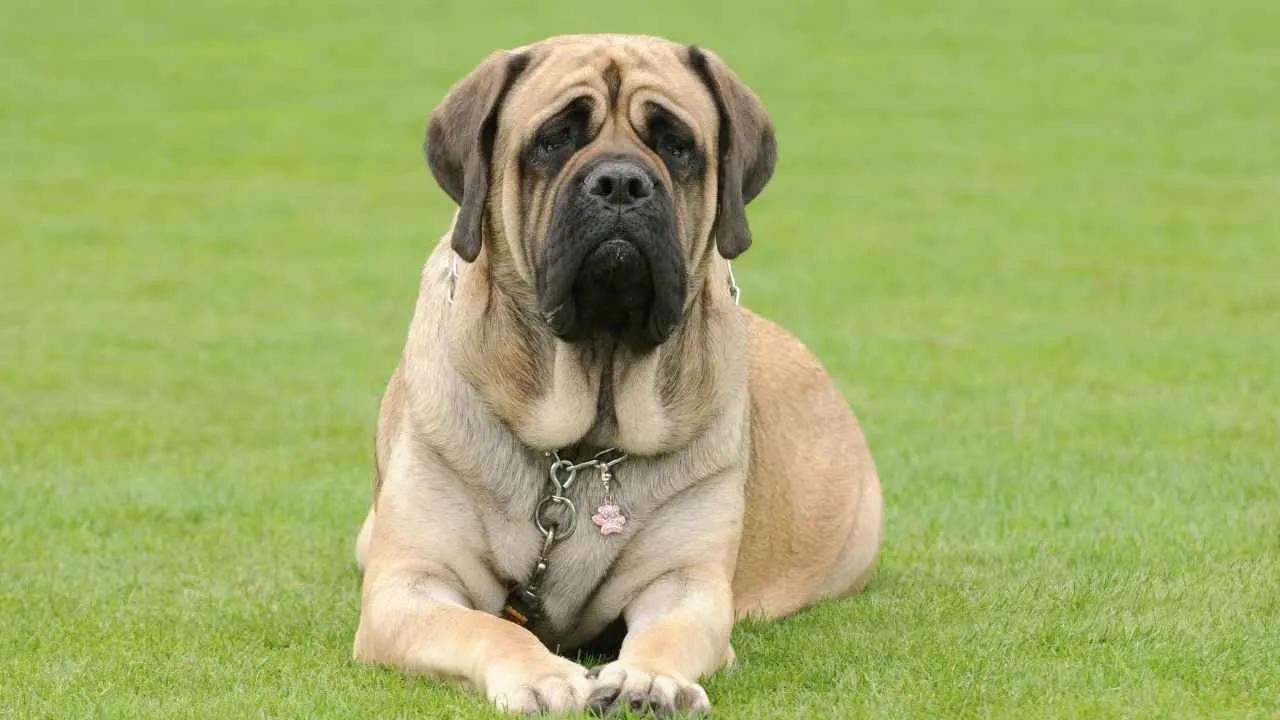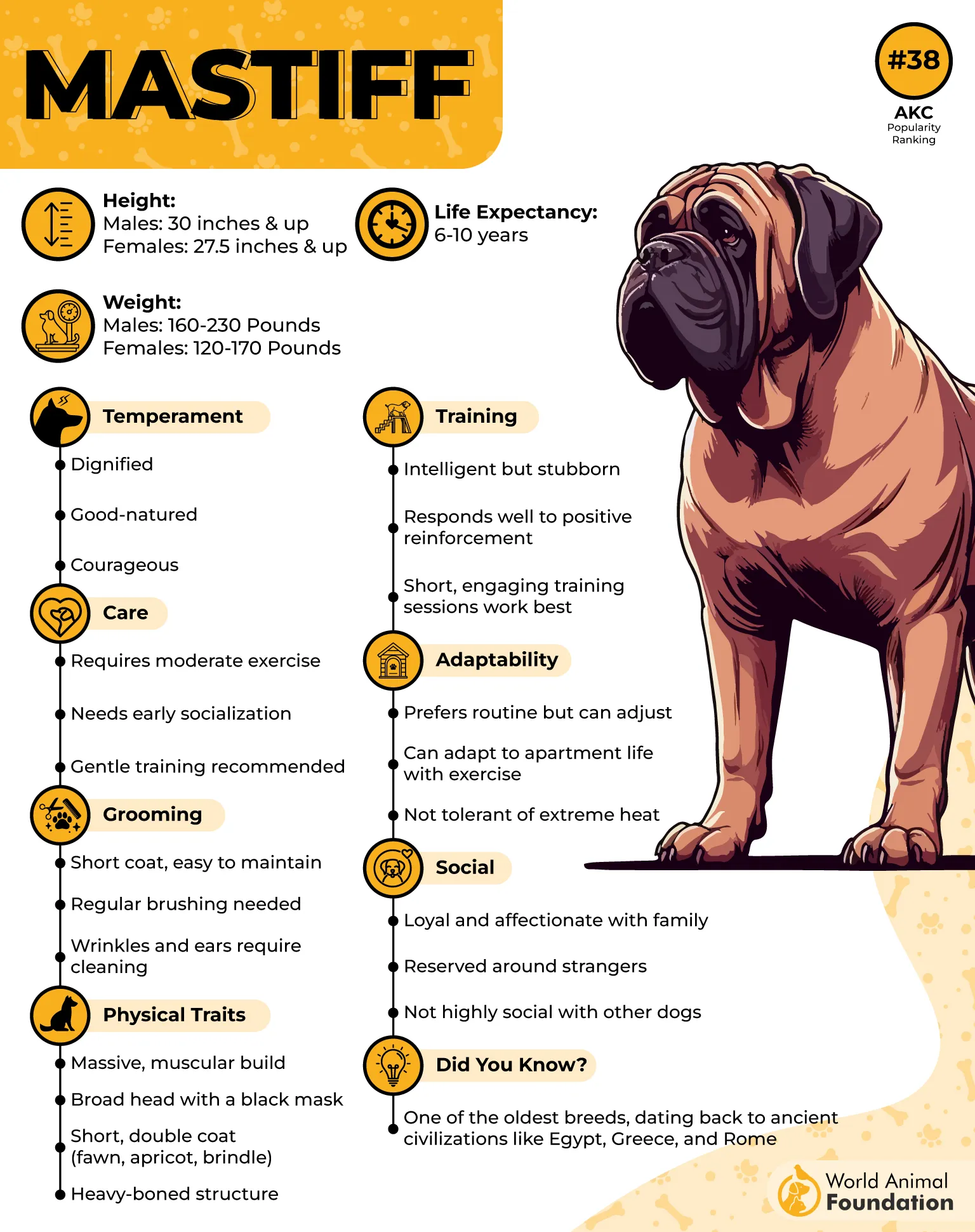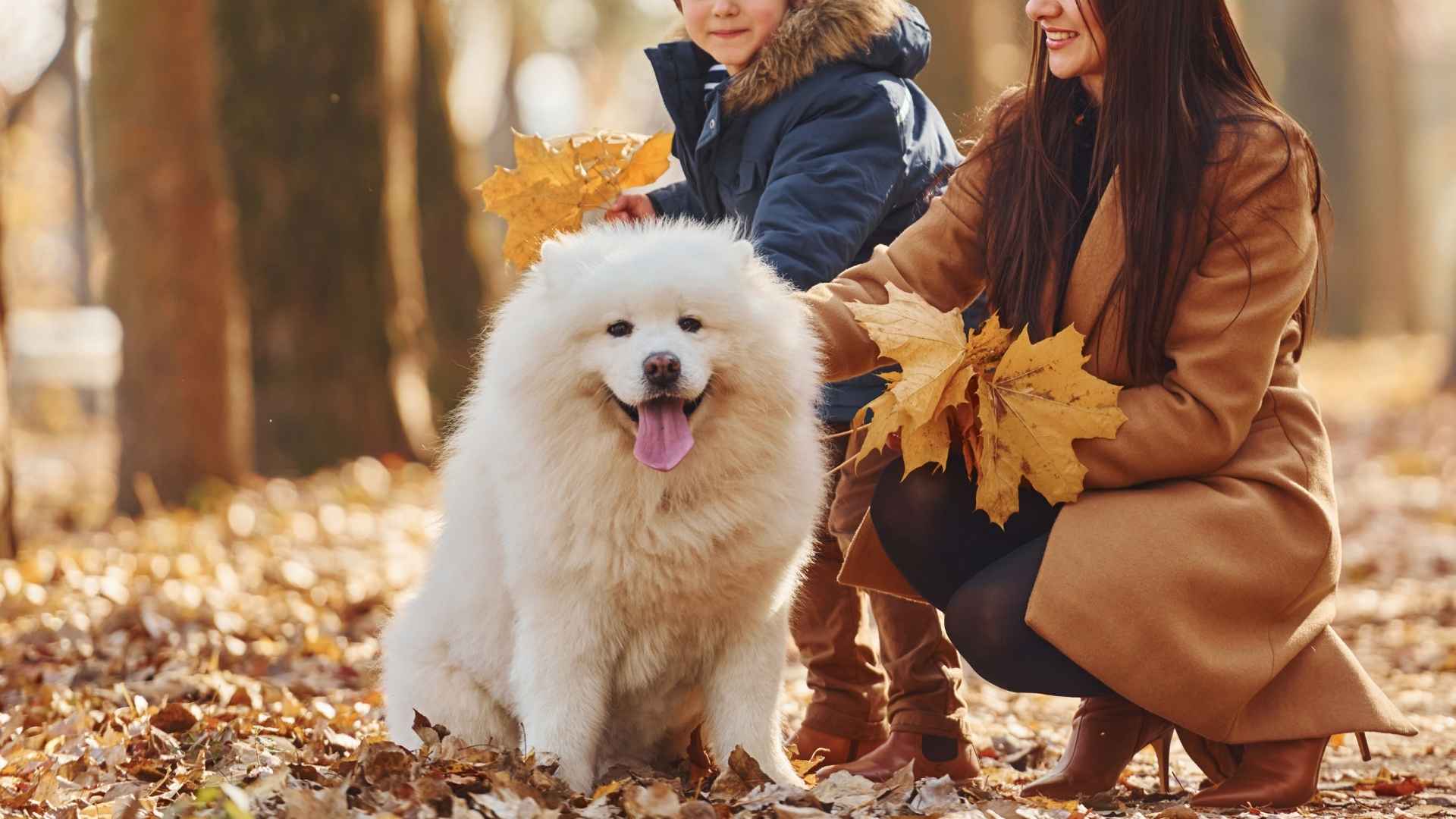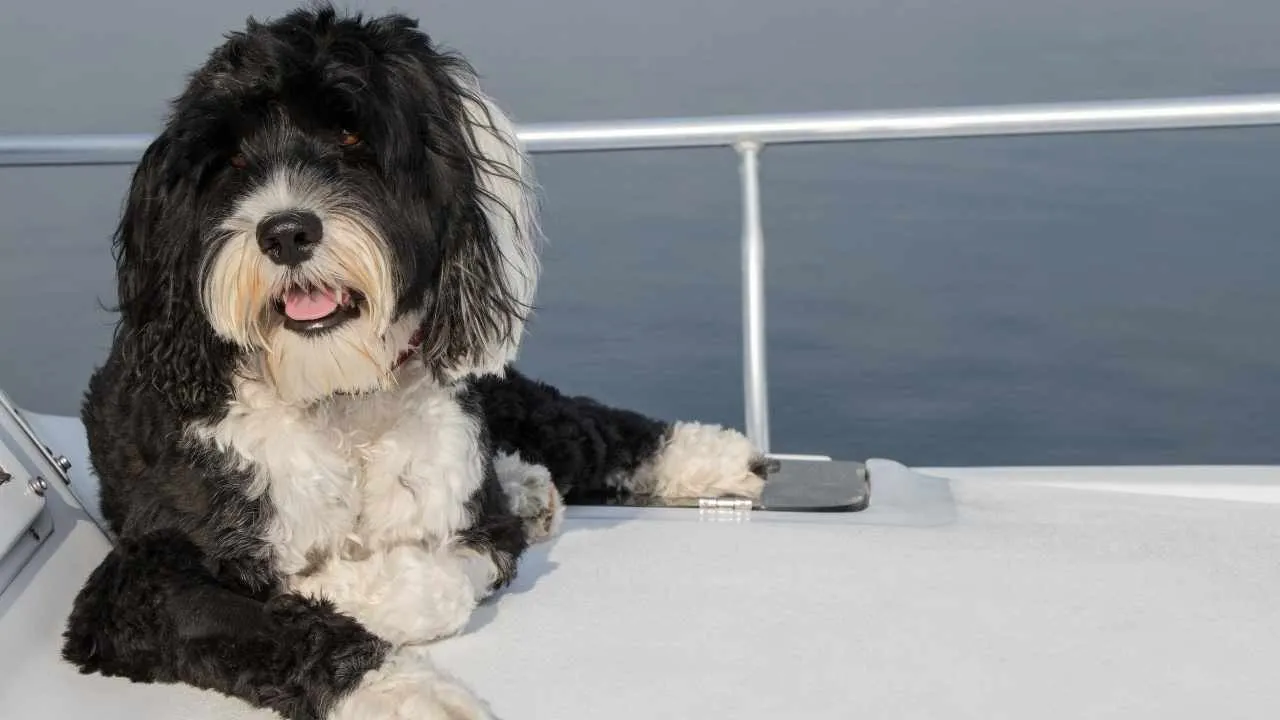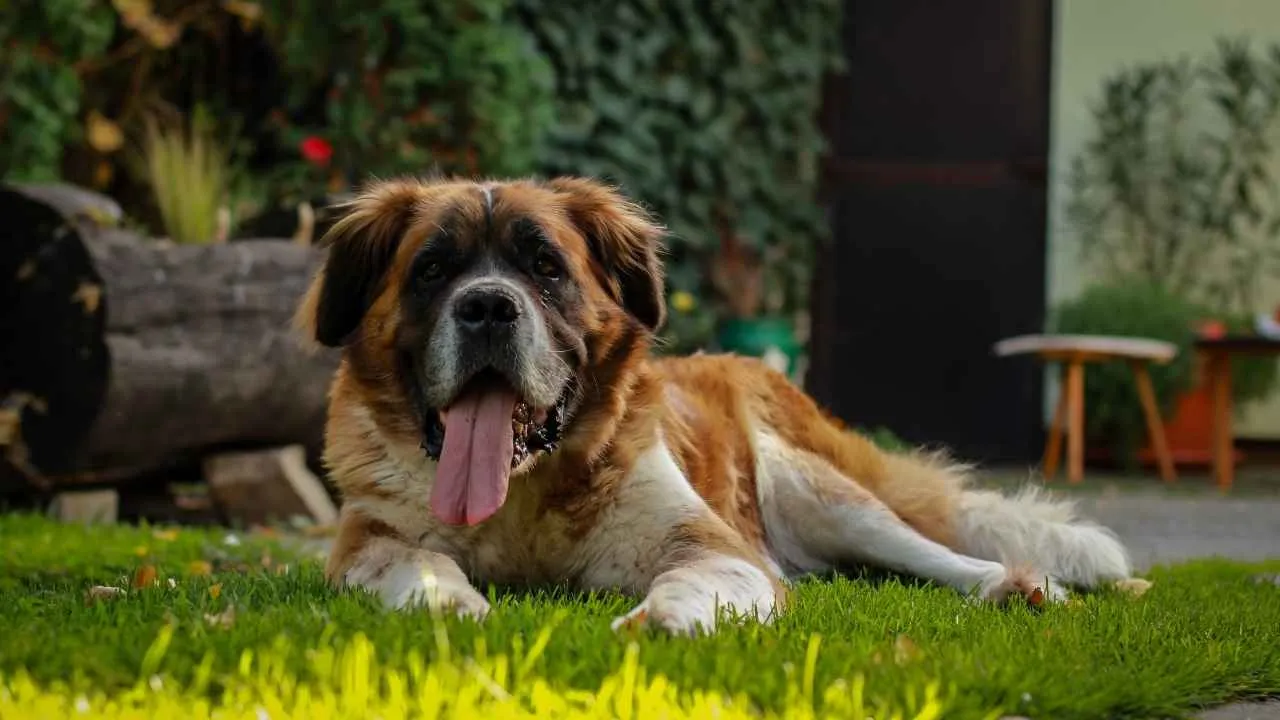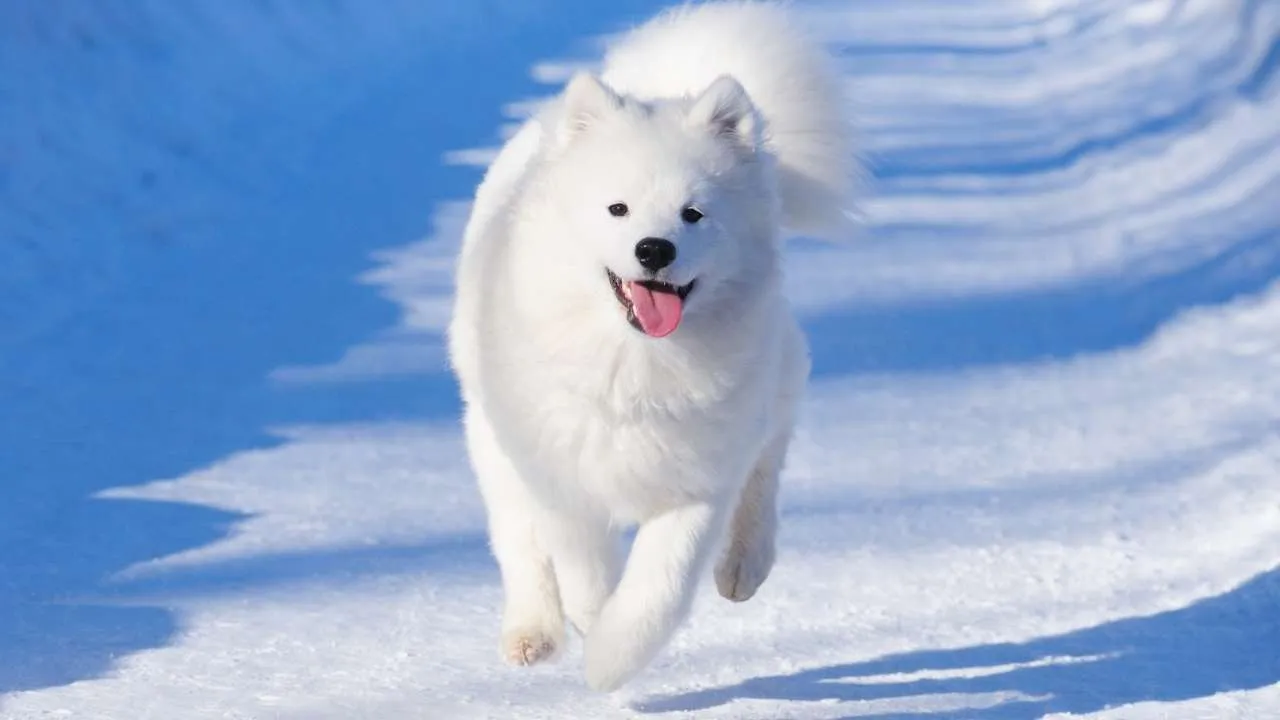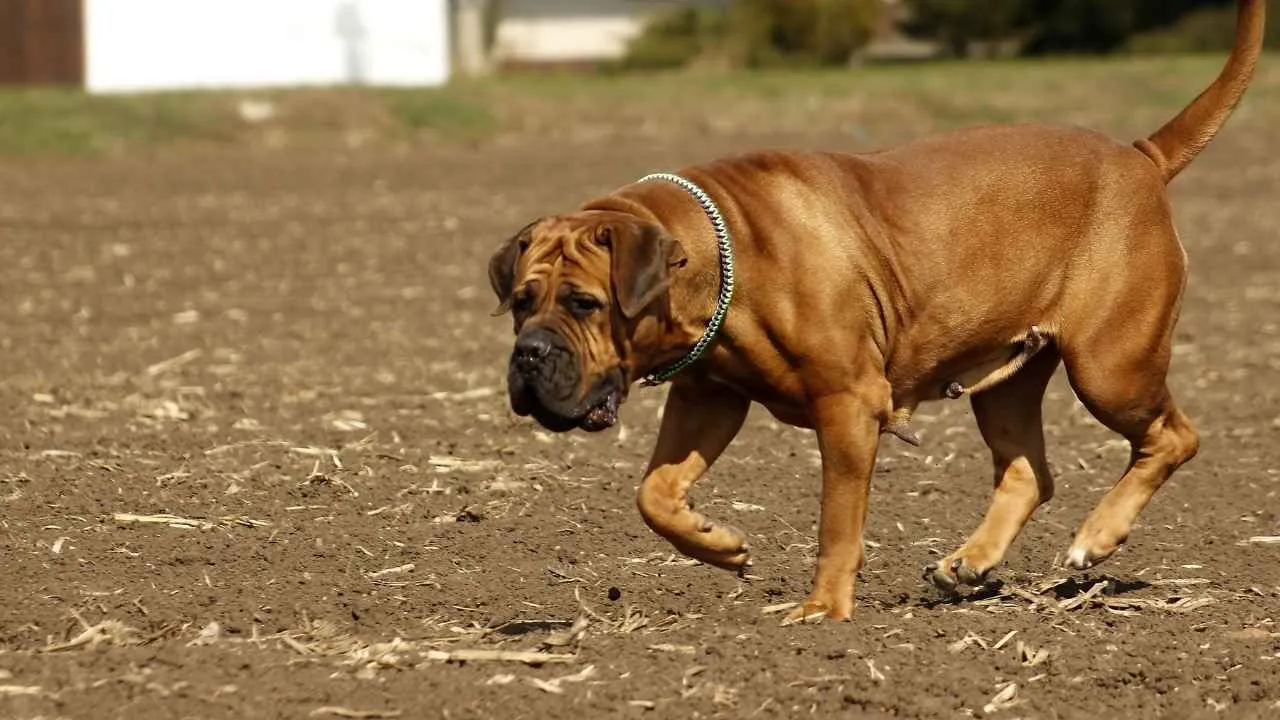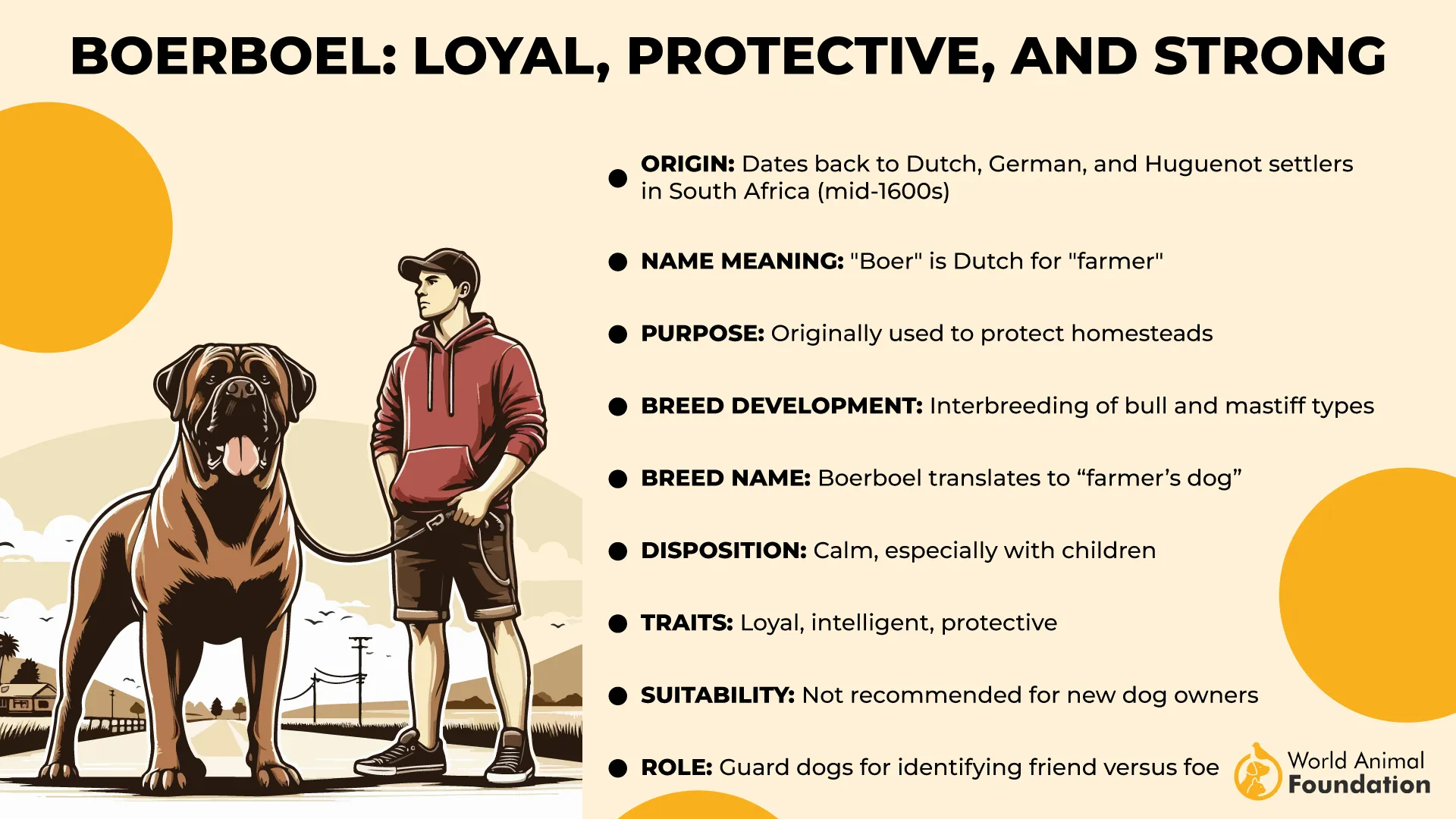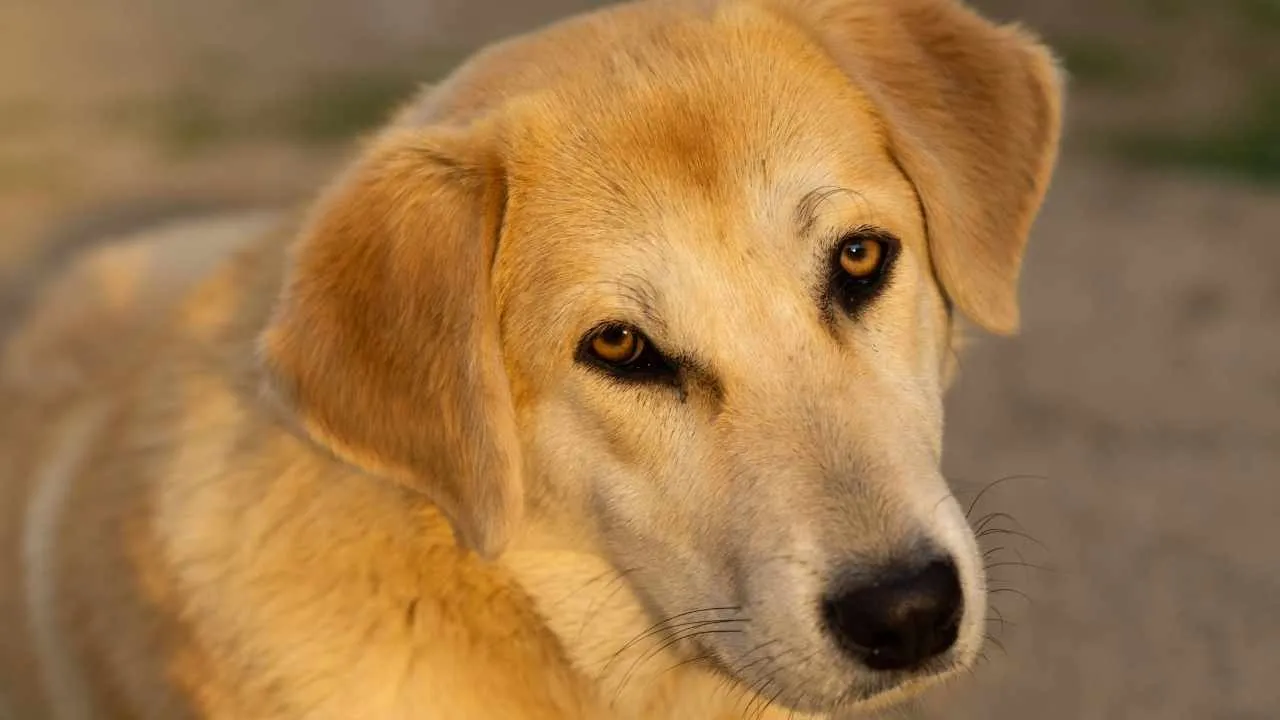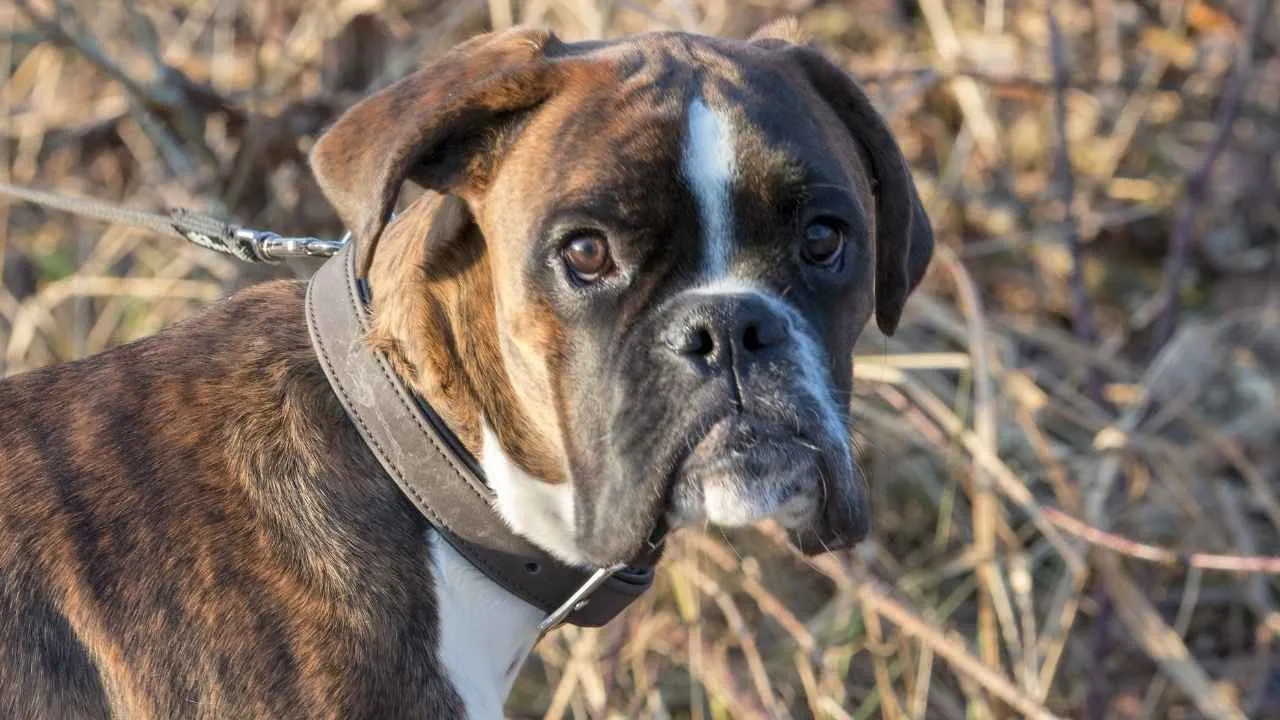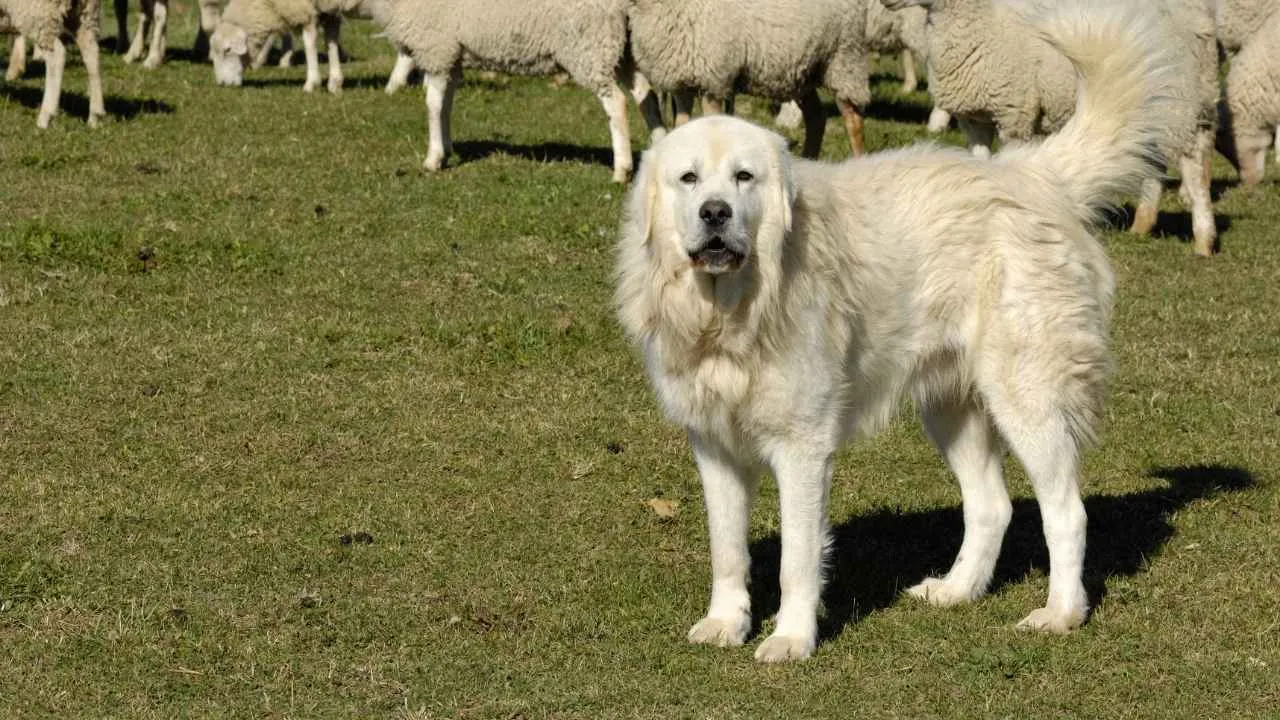WorldAnimalFoundation.org is reader-supported. When you buy through links on our site, we may earn an affiliate commission. Learn More
Did you know that some dogs were bred not just for cuddles but to herd sheep, guard homes, and even pull sleds through blizzards? These aren’t your average lapdogs—they’re working dogs with hearts, brains, and a serious love for getting the job done. But here’s the twist: many of these tough, hard-working canines also make incredibly loyal and loving family companions.
They thrive on teamwork, thrive in homes with active lifestyles, and bring a sense of purpose into your daily routine. Whether it’s a game of fetch that turns into a training session or a long hike that keeps them mentally sharp, these dogs live for it. In this blog, we’re diving into the world of family-friendly working dogs—breeds that know how to hustle and still have enough energy left for couch cuddles.
Get ready to meet the ultimate four-legged multitaskers who love their families as fiercely as they love their jobs.
Family Working Dog Breeds
1. Mastiff
The English Mastiff is one of the most ancient and massive dog breeds, with a lineage tracing back over 4,500 years. Known as part of the Molossian family, Mastiff-like dogs appear in early Asian and Babylonian art, often depicted hunting lions or guarding important figures. These early war dogs accompanied Roman legions, evolving into the imposing guardians and fighters seen throughout European history.
Historically, the breed was used in combat sports and brutal arena contests, often facing wild animals and gladiators. Their strength and intimidation made them popular in blood sports like bull- and bear-baiting until such practices were outlawed in 1835. While no longer used for fighting, the English Mastiff maintained its role as a loyal guard dog, especially favored by the nobility for estate protection.
The breed also holds a unique place in American history. An English Mastiff accompanied John Goodman on the Mayflower, becoming one of the first of its kind in the New World. Though Goodman didn’t survive long after the journey, the settlers cared for his massive companions, introducing the breed to the early colonies.
World War II nearly wiped out the breed in England due to widespread food rationing. Owners were encouraged to put down their pets to conserve resources, which led to a dramatic population decline. Fortunately, dedicated breeders helped revive the English Mastiff, and it has since regained global popularity.
Known for their incredible size, Mastiffs are the heaviest dog breed by mass. Though other breeds may be taller, none match the English Mastiff’s bulk, with typical weights ranging from 175 to 200 pounds. The heaviest dog on record was an English Mastiff, solidifying its reputation as a gentle giant.
2. Newfoundland
The Newfoundland is a large working dog breed from Newfoundland Island, Canada, likely descended from native water dogs and Great Pyrenees brought by Basque fishermen in the 17th century. Bred for strength, great endurance, and swimming ability, it features webbed feet, a powerful build, large lungs, and a thick, oily coat—traits that make it ideal for cold-water rescues and heavy tasks.
Renowned for its lifesaving skills, the Newfoundland gained legendary status after reportedly rescuing Napoleon Bonaparte and aiding the Lewis and Clark Expedition. Historically, it also served as a draft animal, watchdog, and loyal companion for families.
Nicknamed the “Nanny Dog” for its gentle, nurturing temperament, it was famously featured in J.M. Barrie’s Peter Pan as Nana. Despite their size—up to 28 inches tall and 150 pounds—Newfoundlands are affectionate, patient, and particularly good with children. They do best in cool climates, may drool, and can overheat indoors.
Their dense double coat comes in black, brown, grey, or the black-and-white Landseer variety, named after artist Sir Edwin Landseer. As pups, they resemble teddy bears, quickly growing into large but soft-natured adults.
Thanks to their intelligence and emotional sensitivity, Newfoundlands respond well to positive reinforcement and early socialization. They are slow but steady learners and thrive in calm, spacious environments with regular grooming and moderate exercise.
With a lifespan of 9–10 years, they’re not suited for small homes or hot weather, but for families seeking a devoted, trustworthy companion, the Newfoundland is hard to beat.
3. Portuguese Water Dog
The Portuguese Water Dog (PWD), or Cão de Água, is a sturdy, medium-sized breed originally developed to assist Portuguese fishermen. With webbed feet, a waterproof coat, and high stamina, these dogs herded fish, retrieved gear, and delivered messages between boats, making them indispensable crew members.
Today, PWDs are valued for their intelligence, loyalty, and family-friendly temperament. Highly trainable and quick learners, they thrive in active households. The breed gained fame when President Obama’s family adopted one, boosting its popularity.
PWDs have low-shedding curly or wavy coats, often groomed in the retriever or lion clip. Coat colors include black, brown, white, or combinations with white markings. Their energetic and playful nature suits homes that provide regular exercise and mental stimulation.
Though naturally protective and alert barkers, they’re too sociable to serve as family guard dogs. They usually get along well with other pets when properly socialized, though their boisterousness may be too much for very young kids or timid animals.
Their mouthy behavior stems from a retrieving heritage but can be managed with early training. PWDs excel in obedience, agility, and water sports, reflecting their strong working instincts.
Recognized by the AKC in 1983, the Portuguese Water Dog remains a spirited, good-natured, and devoted companion, ideal for families ready to meet their exercise and engagement needs.
4. Saint Bernard
The Saint Bernard is a giant working breed originally developed by monks at the Great St. Bernard Hospice in the Swiss Alps during the 16th and 17th centuries. Descended from mastiff-like dogs brought by the Romans, Saint Bernards became legendary rescue dogs, most famously Barry, who saved about 40 lives in the early 1800s.
With a massive build, deep chest, and expressive face, they are calm and patient. However, their size requires significant care, from housing and transport to healthcare and feeding. Their coats, typically red-brown and white or brindle and white, can be dense or fluffy due to crosses with Newfoundland dogs.
As noted by Britannica, the breed’s role as a “nanny dog” has frequently been portrayed in movies, particularly in the Beethoven film series and Walt Disney’s animated Peter Pan (1953), where a Saint Bernard named Nana acts as the nursemaid to the Darling children.
Despite their placid nature, Saint Bernards require early training due to their strength. While not aggressive, their protective instincts and sheer size often deter intruders. They are gentle with kids and pets but may overwhelm young kids or elderly owners due to their imposing size and strength.
Health issues common in giant breeds—such as hip dysplasia, bloat, and bone cancer—require regular veterinary care and a proper diet, including large-breed puppy food. Preventive measures like gastropexy surgery are often recommended.
Culturally, Saint Bernard has earned a beloved place in legend and pop culture, often depicted as a “nanny dog” or in movies like Beethoven. The myth of them carrying brandy barrels, though popular, is inaccurate.
5. Samoyed
The Samoyed is a striking, medium to large working breed from Siberia, known for its thick, fluffy coat, curved tail, erect ears, and signature “Sammy smile.” Developed by the Nenets people to herd reindeer, pull sleds, and provide companionship in cold climates, this breed has remained largely unchanged for centuries. The Samoyed’s smile also helps minimize drooling, preventing it from freezing in Arctic conditions.
Standing 19–23.5 inches tall and weighing 35–65 pounds, Samoyeds thrive in cold environments but are not suited for hot climates. Their thick double coat, available in white, cream, or biscuit shades, requires regular grooming to manage shedding. Ideal homes for Samoyeds are in cooler regions with ample space for exercise.
Highly energetic, Samoyeds require at least two hours of exercise daily and enjoy activities like hiking, running, and dog sports. They balance their active lifestyle with a calm demeanor indoors, making them great companions for active families. However, training them requires patience, as they can be independent and stubborn. Early, consistent training using reward-based methods is crucial.
Grooming is a commitment, with daily brushing to manage shedding and prevent matting. Regular nail trims, ear cleaning, and dental care are also important.
Samoyeds are great family dogs and get along with strangers and other pets. However, their size and strength require supervision around small children. With proper care, Samoyeds offer loyalty, energy, and charm.
6. Boerboel
The Boerboel, whose name combines the Afrikaans words “boer” (farmer) and “bul” (large dog), originated in South Africa as a powerful farm guardian. Its ancestry traces back to various Mastiff-type dogs brought by British, French, and Dutch settlers, including the Bullenbijter and Bullmastiff.
Over the centuries, these dogs were bred for strength, intelligence, and protection, evolving into the Boerboel we know today. The breed gained popularity beyond South Africa, especially in neighboring Zimbabwe, and was officially recognized by the American Kennel Club in 2015 as part of the working group.
Originally bred to defend remote farms from wild predators like lions, hyenas, and baboon packs, Boerboels were relied upon for their courage and strength. South African farmers still recount tales of the breed’s remarkable bravery. This fearless nature remains a defining trait today, making Boerboels exceptional guard dogs that instinctively protect their home and family without hesitation.
Boerboels are known for their loyalty and affectionate nature toward their families. However, these dogs are highly territorial and cautious around strangers, requiring a slow and proper introduction to new visitors before allowing them into the home.
Due to their strong-willed and dominant personality, Boerboels need an experienced and assertive owner to guide them. Training from an early age is essential to ensure they follow commands and respect boundaries.
Without a clear pack leader, they may attempt to make their own decisions, which can be dangerous given their size and power. A Boerboel must be taught obedience, especially regarding who is welcome in the home.
7. Chinook
The Chinook is a rare sled dog breed developed in New Hampshire in the early 20th century and is now recognized as the state’s official dog. Originally bred by crossing Husky stock with Mastiff-like breeds, Chinooks were designed for strength, endurance, and teamwork.
Though scarce—among the rarest breeds recognized by the American Kennel Club (AKC)—they’ve gained a loyal following for their dependable work ethic and affectionate nature.
AKC states Chinooks are energetic, adventurous dogs with a calm, people-oriented temperament. They thrive in active households and are especially good with children, often forming strong bonds with the entire family.
Despite their powerful build and history as sled dogs, Chinooks are gentle and easy to train, making them suitable for various roles, including therapy and search-and-rescue work.
Training comes naturally to Chinooks, who excel in obedience, agility, and pulling sports like sledding. Their high energy levels mean they need plenty of exercise and mental engagement, making them a poor fit for sedentary owners. While not aggressive or territorial, their sociable nature makes them poor guard dogs but excellent companions.
Their grooming needs stem from a double coat that adapts to seasonal changes. Chinooks have soft, dense undercoats for insulation and coarser outer coats, with longer hair around the neck, shoulders, thighs, and tail underside. Coat colors range from honey to reddish-gold, with darker ears and muzzles and limited symmetrical markings permitted by breed standards.
Physically, Chinooks are strong, balanced, and athletic. They have broad chests, straight backs, and muscular hindquarters. Their oval-shaped feet are built for tough terrain, while their expressive, almond-shaped eyes reflect intelligence and warmth.
Though they seldom bark, Chinooks are known for being expressive, using distinctive “woo-woo” vocalizations and whines to communicate with their humans.
8. Boxer
The Boxer is a muscular, smooth-coated working dog originally developed in Germany with ancestry that traces back to ancient Assyria. It descends from the Bullenbeisser, a now-extinct breed once used to hunt large game-like bears and boars.
Boxers carry a strong lineage that includes Bulldogs and Great Danes, contributing to their square-built frame, strong muzzle, and distinctive black facial mask. The breed standard includes fawn and brindle coats and a compact, athletic physique.
Despite their serious expression, Boxers are affectionate, playful, and often clownish with their families. One of their most charming habits is the “kidney bean dance,” where they twist their bodies and circle with joy when greeting their loved ones. They are loyal and protective companions who bond deeply with their human family and tend to show only moderate friendliness to unfamiliar pets or people.
The Boxer’s intelligence and devotion make it an exceptional service dog. These dogs have been trained as guide dogs for the visually impaired and as medical alert dogs for individuals with conditions like epilepsy. Their reliability and ability to form strong human bonds make them well-suited for support roles that require both intuition and discipline.
Though they are gentle with their families, Boxers’ exuberance may be overwhelming for very young children or elderly owners. They require early training to curb their jumping tendencies and ensure their energy is channeled appropriately.
With a lifespan of 10 to 12 years and a weight range of 65 to 80 pounds, the Boxer is a long-term commitment for owners willing to provide the exercise, attention, and love this spirited breed craves.
9. Great Pyrenees
The Great Pyrenees is a majestic and ancient breed known for its elegance, strength, and protective instincts. With a predominantly white coat—sometimes marked with shades of gray, tan, or badger—these dogs are large and powerful, with males reaching up to 32 inches in height and over 100 pounds in weight.
This breed’s lineage traces back thousands of years. Fossils in the Pyrenees Mountains date the breed’s presence to between 1800 and 1000 B.C., with ancestry believed to originate in Asia Minor as far back as 11,000 years ago.
Historically used by shepherds as livestock guardians, the Great Pyrenees evolved into both a working dog and a royal companion. By the 17th century, they were declared the Royal Dog of France, even finding favor with Queen Victoria of England.
True to their guardian role, the Great Pyrenees are deeply protective of their family. However, their protective nature can be misinterpreted during play, as they may react if they perceive a family member to be in danger. For this reason, proper training and supervision are important when they’re around unfamiliar people or pets.
As noted by WebMD, these dogs were bred to work at night, which has made them naturally nocturnal. Owners often notice their tendency to bark after dark, a trait once essential for deterring predators from the flock. While this makes them excellent nighttime watchdogs, it’s something to consider in residential areas.
The breed played a pivotal role in preserving the St. Bernard population during the 19th century by contributing to breeding efforts after natural disasters and disease had depleted their numbers. This underscores their genetic strength and resilience.
Because of their independent and roaming nature, they are not suited for life in unsecured open spaces, as their instinct to wander can lead them far from home in pursuit of perceived threats or simply exploring.
Conclusion
Family-friendly working dog breeds offer a perfect balance of strength, intelligence, and loyalty, making them great companions for active families. From the Australian Cattle Dog’s herding skills to the gentle nature of the Bernese Mountain Dog, these dogs excel in various roles.
Other dog breeds like the Border Collie and Greater Swiss Mountain Dog, known for hauling loads, and the Siberian Husky and Black Russian Terrier, with their versatility, highlight the diverse capabilities of these working dogs.
Larger breeds, such as the Giant Schnauzer and Alaskan Malamute, are also well-suited for tasks like hunting wild boar or police work while still being sensitive and sweet on a daily basis. Overall, family-friendly working dogs offer both hardworking traits and the affectionate companionship families need.
